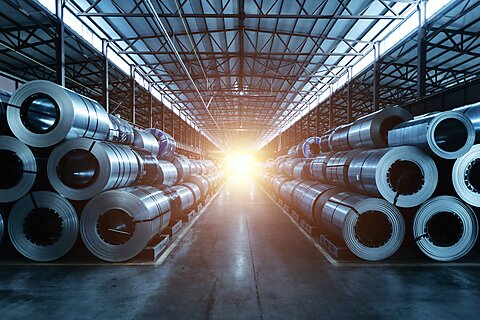Clark Packard and Alfredo Carrillo Obregon
For nearly 60 years, the United States steel industry has been one of the most protected sectors of the American economy. Policymakers have showered an unsavory mix of trade restrictions to benefit domestic steel firms including quotas, tariffs, aggressive trade remedies, and procurement preferences. With the Trump administration promising a new onslaught of protectionism, steel prices are rising even before the tariffs are implemented. As always, consumers will pay the price.
In 2018, the first Trump administration imposed 25 percent “national security” tariffs on steel imported from virtually every country in the world in a bid to boost domestic steel output (despite the Secretary of Defense noting at the time that the military only needed 3 percent of domestic steel production). Those tariffs imposed significant costs on the American economy. Over the course of the last two administrations, certain trading partners were able to secure exemptions or were able to swap tariffs for quotas or tariff-rate quotas (TRQs) (Table 1).
On February 10, President Trump issued a proclamation imposing a universal 25 percent tariff on all steel imports—again under the dubious guise of “national security”—effective March 10. The proclamation eliminated existing exemptions, quotas, and TRQs and expanded their scope to include steel derivative products. The administration also abolished the tariff exclusion process. And now prices are rising even with the tariffs yet to take effect.
Since President Trump’s proclamation, the domestic price of a ton of hot-rolled steel has increased by 8.9 percent while a ton of cold-rolled steel has increased by 20 percent, according to the latest report from SteelBenchmarker, a widely used pricing system for buyers and sellers of steel (Figure 1). Regrettably, this episode is only further fueling the long-running trend of US steel prices being consistently higher than in the rest of the world.
These figures suggest the tariffs’ high cost for the numerous US manufacturers ranging from automakers to machinery producers that rely on steel as a key input. Yet the situation on the ground may be even worse. For instance, analysts and other steel market participants recently explained that domestic steelmakers are raising their prices above those of foreign steel imported under a 25 percent tariff. Meanwhile, steel-consuming businesses interviewed by Reuters last week reported that the price they pay for steel has increased by double-digit percentages and that mills have canceled or put orders on hold and increased lead times due to panic buying by other customers. This upward pressure on steel prices comes right as input costs for US manufacturers jumped to their highest level in two years.
To be sure, there was no mystery before the recent steel tariffs announcement that they would harm domestic manufacturing and other steel-consuming industries. Multiple economic studies, including a US International Trade Commission report calculating the tariffs’ disproportionate costs to the manufacturing, construction, and energy sectors, clearly show that this has been the case ever since the tariffs were first imposed in 2018.
Moreover, as some of these studies also indicate, steel-consuming industries employ at least 46 times more workers than those employed in domestic manufacturing, so far more Americans stand to be hurt than helped by the tariffs. If President Trump is truly interested in boosting American manufacturing, fueling the long-running price disparity between US and global steel prices through misguided and demonstrably ineffective tariffs is not the way to do it.
Unfortunately, it seems that the government’s obsession with catering to Big Steel has once again trumped sound economic policy.



